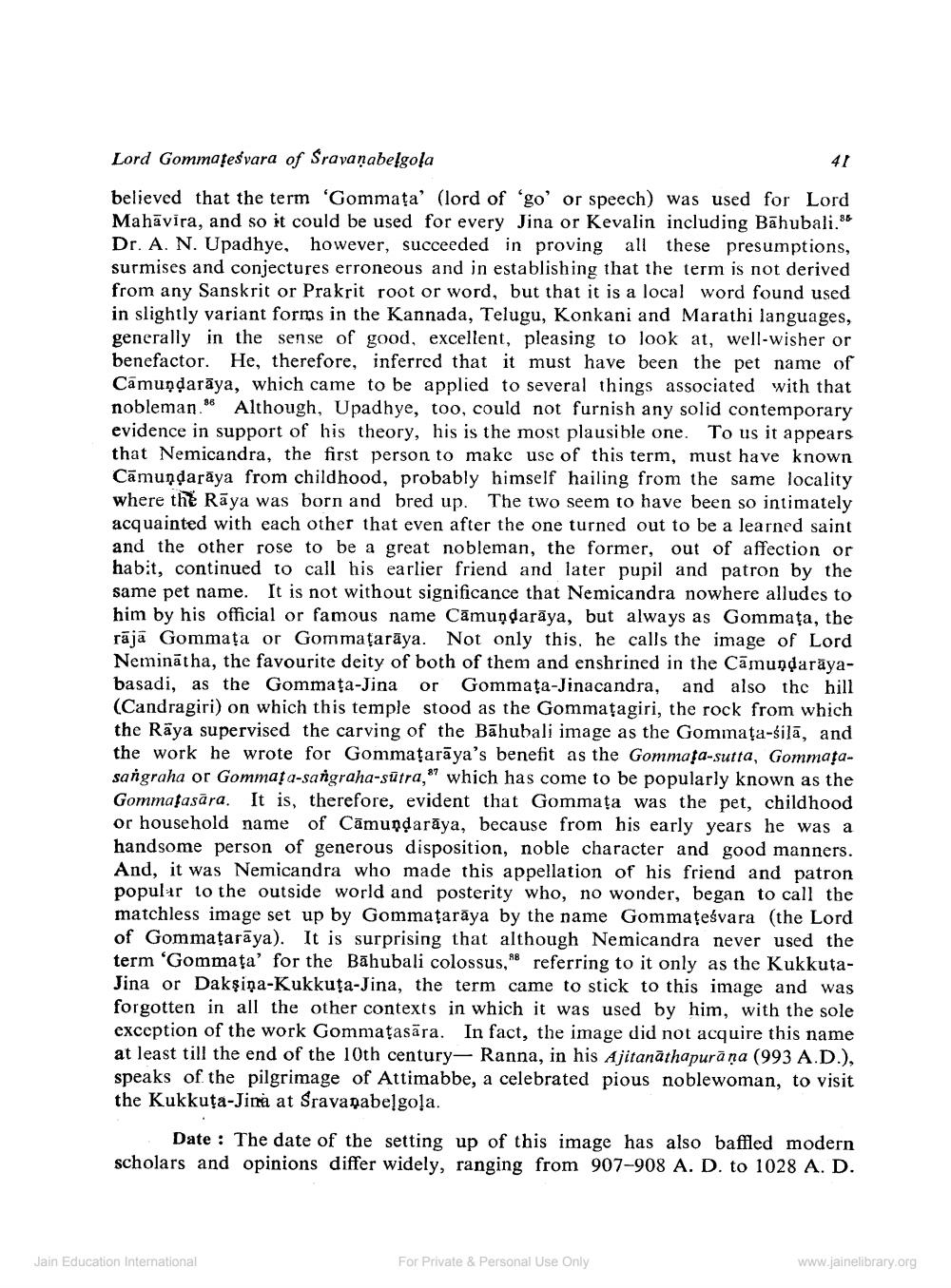________________
41
Lord Gommatesvara of Sravaṇabelgola
believed that the term 'Gommata' (lord of 'go' or speech) was used for Lord. Mahavira, and so it could be used for every Jina or Kevalin including Bahubali. Dr. A. N. Upadhye. however, succeeded in proving all these presumptions, surmises and conjectures erroneous and in establishing that the term is not derived from any Sanskrit or Prakrit root or word, but that it is a local word found used in slightly variant forms in the Kannada, Telugu, Konkani and Marathi languages, generally in the sense of good, excellent, pleasing to look at, well-wisher or benefactor. He, therefore, inferred that it must have been the pet name of Cămundaraya, which came to be applied to several things associated with that nobleman. Although, Upadhye, too, could not furnish any solid contemporary evidence in support of his theory, his is the most plausible one. To us it appears that Nemicandra, the first person to make use of this term, must have known Camundaraya from childhood, probably himself hailing from the same locality where the Raya was born and bred up. The two seem to have been so intimately acquainted with each other that even after the one turned out to be a learned saint and the other rose to be a great nobleman, the former, out of affection or habit, continued to call his earlier friend and later pupil and patron by the same pet name. It is not without significance that Nemicandra nowhere alludes to him by his official or famous name Camundaraya, but always as Gommata, the rājā Gommata or Gommataraya. Not only this. he calls the image of Lord Neminatha, the favourite deity of both of them and enshrined in the Camundarayabasadi, as the Gommața-Jina or Gommața-Jinacandra, and also the hill (Candragiri) on which this temple stood as the Gommatagiri, the rock from which the Raya supervised the carving of the Bahubali image as the Gommata-silä, and the work he wrote for Gommaṭaraya's benefit as the Gommata-sutta, Gommatasangraha or Gommata-sangraha-s@tra," which has come to be popularly known as the Gommalasara. It is, therefore, evident that Gommata was the pet, childhood or household name of Camunḍaraya, because from his early years he was a handsome person of generous disposition, noble character and good manners. And, it was Nemicandra who made this appellation of his friend and patron. popular to the outside world and posterity who, no wonder, began to call the matchless image set up by Gommataraya by the name Gommateśvara (the Lord of Gommataraya). It is surprising that although Nemicandra never used the term 'Gommata' for the Bahubali colossus," referring to it only as the KukkutaJina or Daksiņa-Kukkuta-Jina, the term came to stick to this image and was forgotten in all the other contexts in which it was used by him, with the sole exception of the work Gommatasära. In fact, the image did not acquire this name at least till the end of the 10th century- Ranna, in his Ajitanathapura na (993 A.D.), speaks of the pilgrimage of Attimabbe, a celebrated pious noblewoman, to visit the Kukkuta-Jina at Sravapabelgola.
Date: The date of the setting up of this image has also baffled modern scholars and opinions differ widely, ranging from 907-908 A. D. to 1028 A. D.
Jain Education International
For Private & Personal Use Only
www.jainelibrary.org




